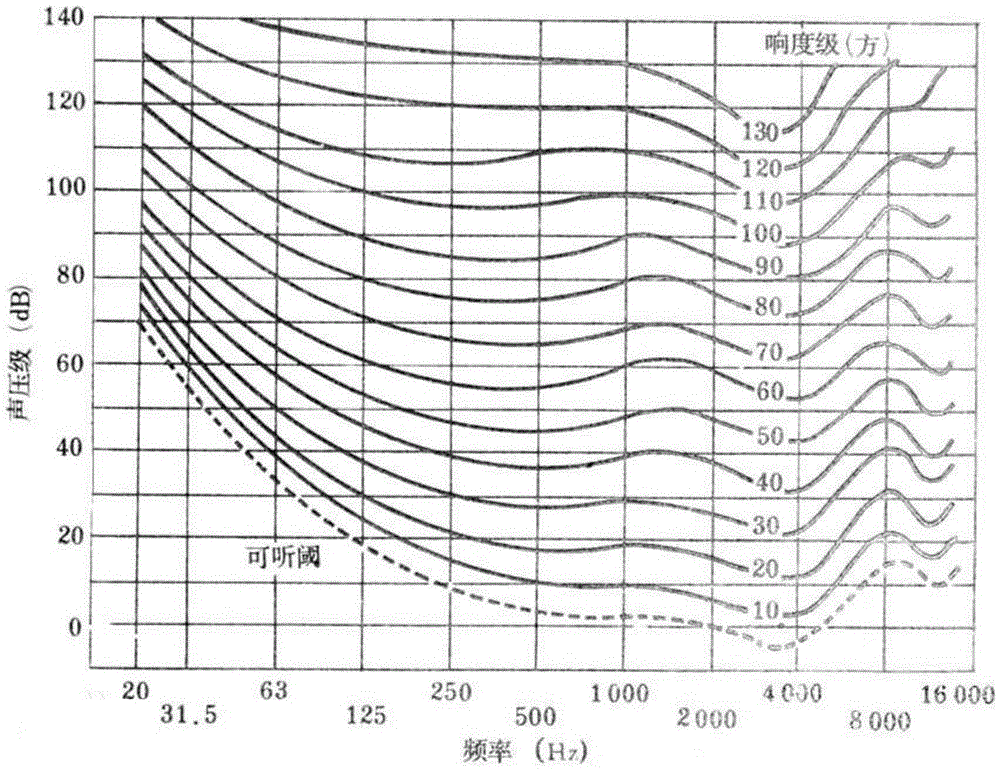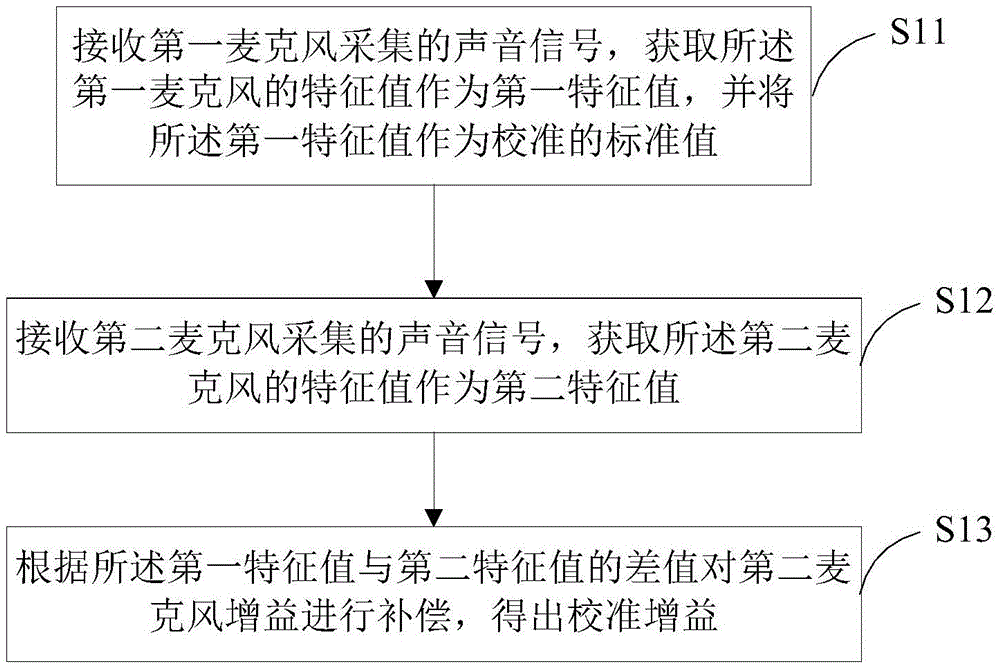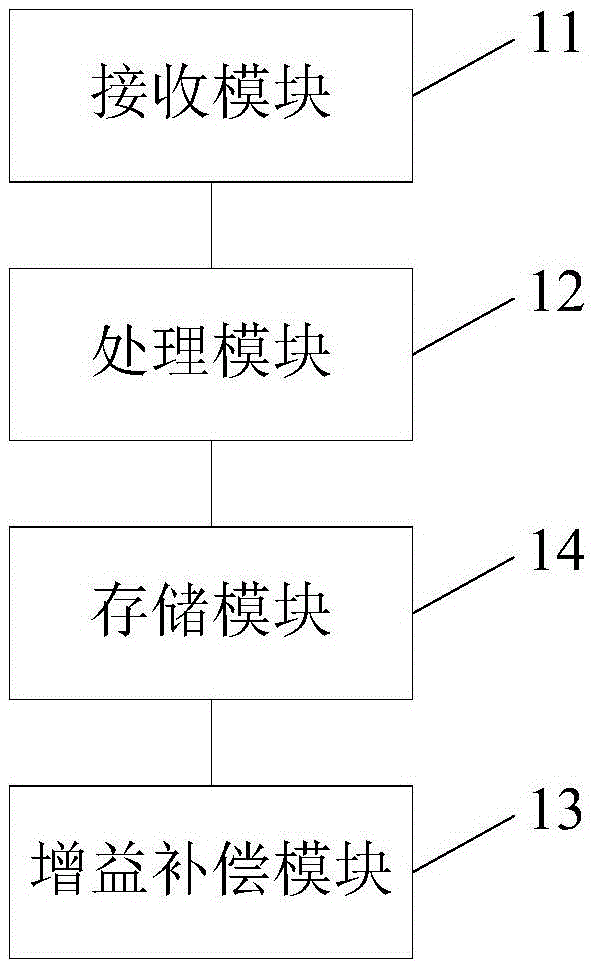Microphone calibration method, device and mobile terminal
A calibration method and a calibration device technology, which are applied to electrical components, signal processing, etc., can solve problems such as poor consistency of sound loudness at the sending end, reduced user experience, and louder sound
- Summary
- Abstract
- Description
- Claims
- Application Information
AI Technical Summary
Problems solved by technology
Method used
Image
Examples
Embodiment 1
[0046] see figure 2 , a flowchart of a microphone calibration method is given, and the microphone is applied to a mobile terminal, including steps:
[0047] S11. Receive a sound signal collected by a first microphone, acquire a characteristic value of the first microphone as a first characteristic value, and use the first characteristic value as a standard value for calibration.
[0048] Specifically, the mobile terminals in this embodiment include but are not limited to mobile phones, smart phones, notebook computers, digital broadcast receivers, PDAs (Personal Digital Assistants), PADs (Tablet Computers), PMPs (Portable Multimedia Players), etc. and other mobile terminals. Due to the limitation of the processing accuracy of the microphone, the sensitivity of the microphone produced by the microphone manufacturer has an output of 80%-90% within the qualified index in the range of ±3dB. In this embodiment, the first microphone is a microphone that satisfies the qualified in...
Embodiment 2
[0075] see image 3 , a microphone sensitivity calibration device provided in an embodiment of the present invention, comprising: a receiving module 11, a processing module 12, a gain compensation module 13, and a storage module 14, wherein,
[0076] The receiving module 11 is configured to receive the sound signal collected by the microphone.
[0077] Specifically, the mobile terminals in this embodiment include but are not limited to mobile phones, smart phones, notebook computers, digital broadcast receivers, PDAs (Personal Digital Assistants), PADs (Tablet Computers), PMPs (Portable Multimedia Players), etc. and other mobile terminals. The microphone receives the sound from the artificial mouth of the audio test equipment, and tests the frequency response curve of the microphone of the mobile terminal (for example, a mobile phone). This test method uses the mobile phone to preset the APP of the automatic production line. The APP can directly call the audio circuit of the...
Embodiment 3
[0091] see Figure 4 , is a schematic diagram of a physical structure of an audio processing system provided by an embodiment of the present invention. Including: an audio codec 1000, a processor 1100, the audio codec (Codec) is used to process audio information, input, output and volume control and other audio-related functions, the connection between the audio codec and the processor (CPU) It communicates with the digital audio interface DAI (IIS) through the I2C bus. The I2C bus is used by the CPU to read and write the Codec register data through it. The DAI (IIS) is used to realize the communication of audio data between the CPU and the Codec.
[0092] Wherein, the audio codec 1000 also includes: Mixer1001, ADC1002, DSP1003, DAC1004. see Figure 5 ,
[0093]The input of audio codec includes microphone (MIC), telephone signal (PhoneIn), output includes earphone (HP, HeadPhone), speaker (Spk, Speaker), telephone signal (PhoneOut), among them,
[0094] Mixer1001, a mixer,...
PUM
 Login to View More
Login to View More Abstract
Description
Claims
Application Information
 Login to View More
Login to View More - R&D
- Intellectual Property
- Life Sciences
- Materials
- Tech Scout
- Unparalleled Data Quality
- Higher Quality Content
- 60% Fewer Hallucinations
Browse by: Latest US Patents, China's latest patents, Technical Efficacy Thesaurus, Application Domain, Technology Topic, Popular Technical Reports.
© 2025 PatSnap. All rights reserved.Legal|Privacy policy|Modern Slavery Act Transparency Statement|Sitemap|About US| Contact US: help@patsnap.com



